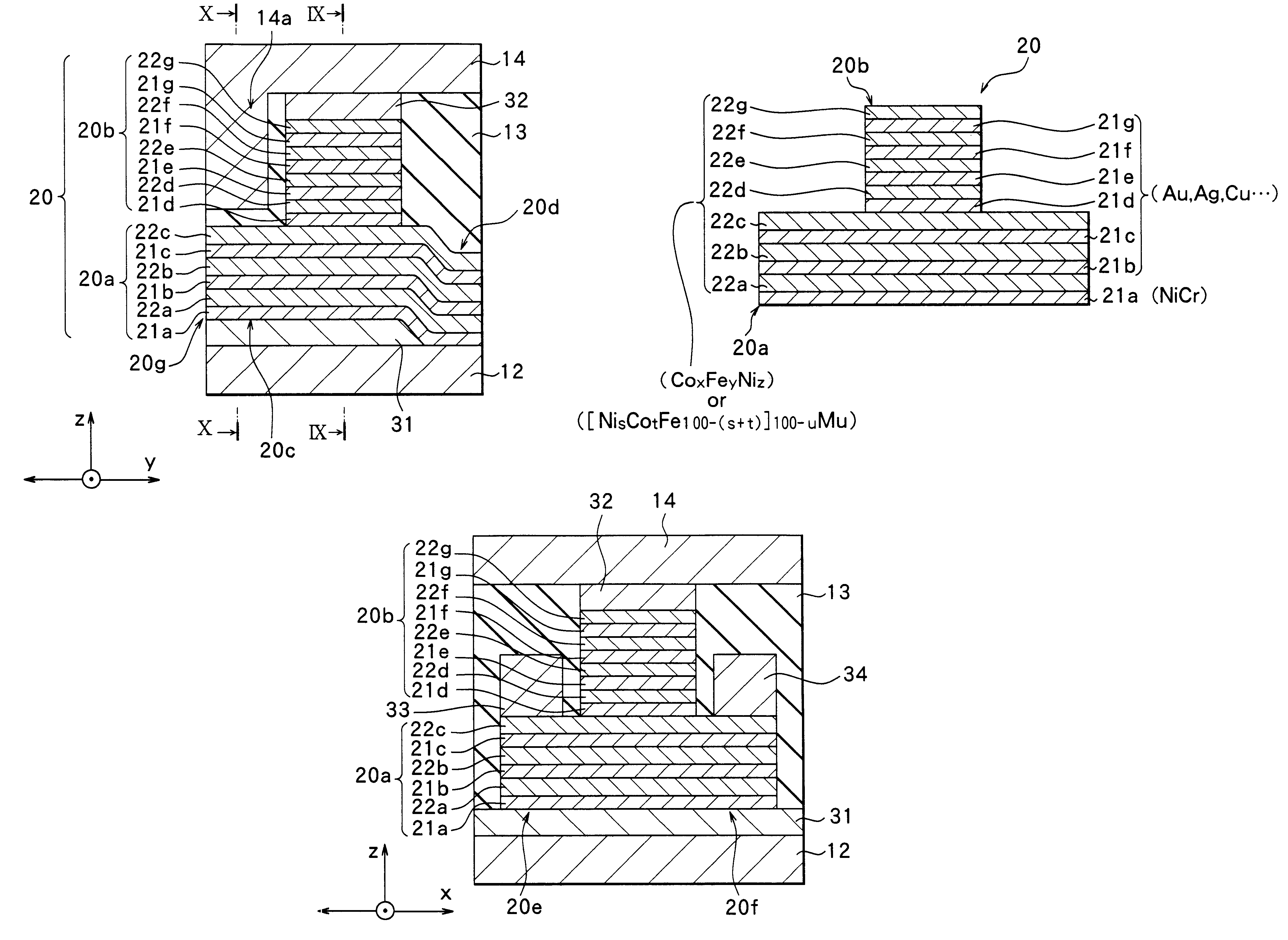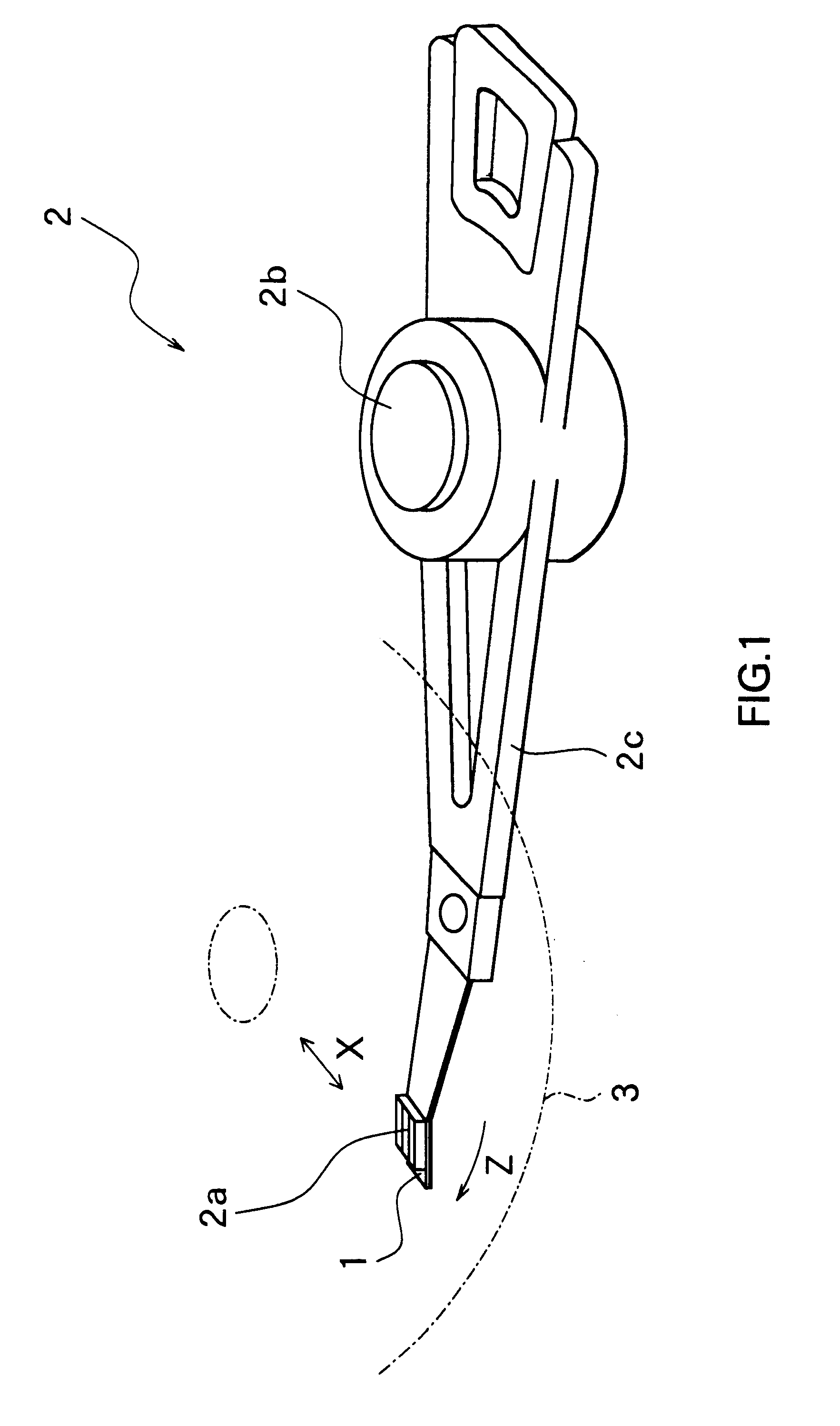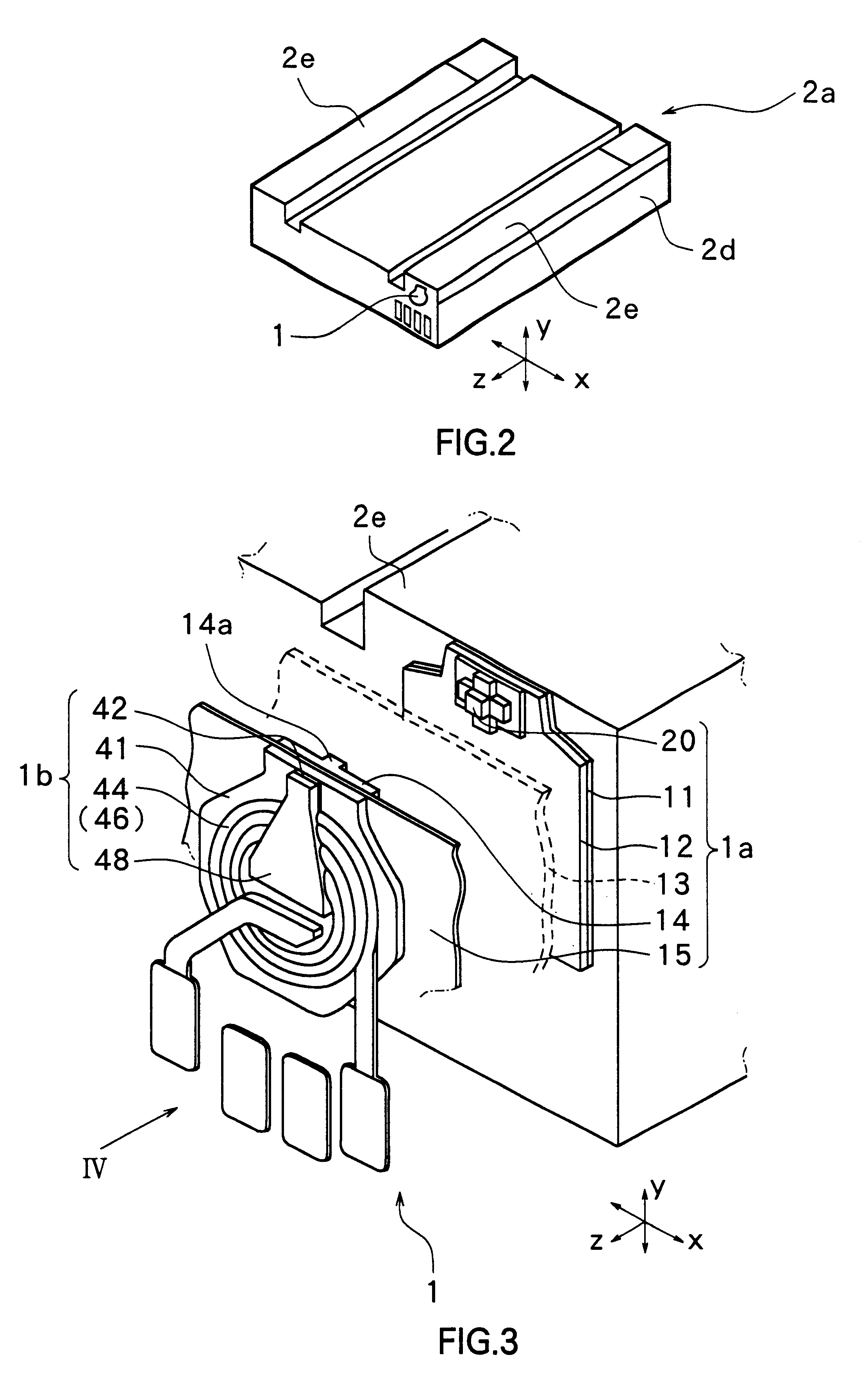Thin film magnetic head and magnetic transducer
- Summary
- Abstract
- Description
- Claims
- Application Information
AI Technical Summary
Benefits of technology
Problems solved by technology
Method used
Image
Examples
second embodiment
Next, a second embodiment of the invention will be described with reference to FIG. 16. A thin film magnetic head according to the second embodiment is the same as the thin film magnetic head according to the first embodiment except that nonmagnetic layers 121b to 121g of a stack 120 are made of other materials. Accordingly, only the stack 120 is shown in FIG. 16. The same structural components as the structural components of the first embodiment are indicated by the same reference numerals, and the detailed description thereof is omitted.
In the stack 120 of the embodiment, it is preferable that the nonmagnetic layers 121b to 121g are made of a material containing Ni and Cr. Specifically, it is preferable that the nonmagnetic layers 121b to 121g are made of (Ni.sub.a Cr.sub.100-a).sub.b A.sub.100-b similarly to the underlayer 21a, where A, a and b are as mentioned in the description of the first embodiment. The composition of each of the nonmagnetic layers 121b to 121g may be identi...
third embodiment
Next, a third embodiment of the invention will be described with reference to FIG. 17. A thin film magnetic head according to the third embodiment is the same as the thin film magnetic head according to the first embodiment except that the material or composition of magnetic layers 222a to 222c included in a first region 220a of a stack 220 differs from the material or composition of magnetic layers 222d to 222g included in a second region 220b. Accordingly, only the stack 220 is shown in FIG. 17.
Preferably, the magnetic layers 222a to 222c of the first region 220a are made of, for example, a material containing at least Ni in a group consisting of Ni, Co, Fe, Cr, Ta, Rh, Mo, Zr and Nb. Specifically, it is preferable that the magnetic layers 222a to 222c are made of [Ni.sub.s Co.sub.t Fe.sub.100-(s+t) ].sub.100-u M.sub.u, where s, t and u are as mentioned in the description of the first embodiment.
Preferably, the magnetic layers 222d to 222g of the second region 220b are made of, fo...
fourth embodiment
Next, a fourth embodiment of the invention will be described with reference to FIG. 18. A thin film magnetic head according to the fourth embodiment is the same as the thin film magnetic head according to the third embodiment except that the material or composition of nonmagnetic layers 321b and 321c included in a first region 320a of a stack 320 differs from the material or composition of nonmagnetic layers 321d to 321g included in a second region 320b. Accordingly, only the stack 320 is shown in FIG. 18.
In the stack 320 of the embodiment, it is preferable that the nonmagnetic layers 321b and 321c included in the first region 320a are made of a material containing Ni and Cr. Specifically, it is preferable that the nonmagnetic layers 321b and 321c are made of (Ni.sub.a Cr.sub.100-a).sub.b A.sub.100-b, where A, a and b are as mentioned in the description of the first embodiment. The composition of each of the nonmagnetic layers 321b and 321c may be identical with or different from th...
PUM
 Login to View More
Login to View More Abstract
Description
Claims
Application Information
 Login to View More
Login to View More - R&D
- Intellectual Property
- Life Sciences
- Materials
- Tech Scout
- Unparalleled Data Quality
- Higher Quality Content
- 60% Fewer Hallucinations
Browse by: Latest US Patents, China's latest patents, Technical Efficacy Thesaurus, Application Domain, Technology Topic, Popular Technical Reports.
© 2025 PatSnap. All rights reserved.Legal|Privacy policy|Modern Slavery Act Transparency Statement|Sitemap|About US| Contact US: help@patsnap.com



